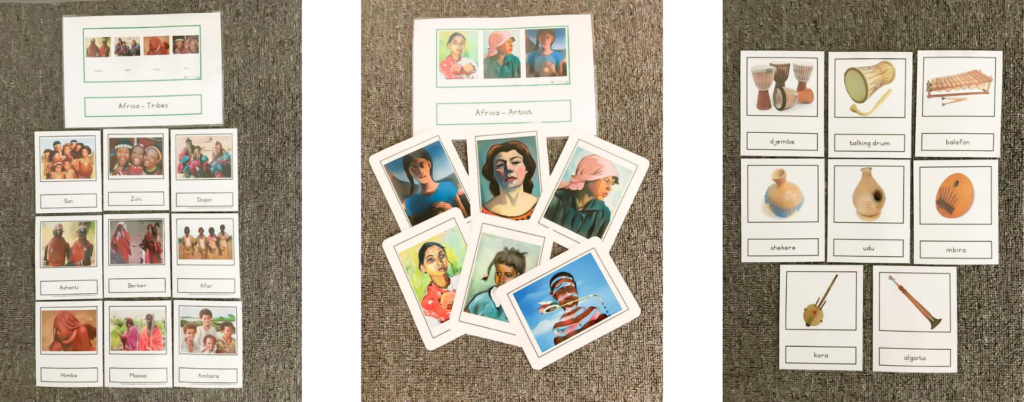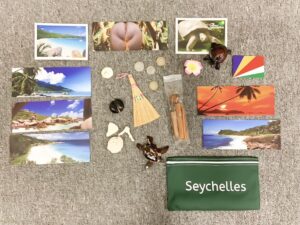Although discussion folders were not originally designed by Maria Montessori, they feature in most Montessori preschools and primary classrooms. The purpose of a discussion folder is to fill it with images that highlight a certain topic that may spark a child’s interest or to further engage a child with a topic they have shown interest in. Discussion folders are found in all areas of the Knowledge and Understanding of the World curriculum area.
A good example of this may be the Africa Continent folder, where the child is given an introductory glimpse of the continent on which s/he lives. Africa is a very diverse country in terms of her people, industry, natural beauty and famous landmarks. The pictures in the folder should reflect this.
Consider the Berbers in Morocco, pyramids in Egypt, coffee plantations in Kenya, lake fishing in Ghana, the Victoria Falls in Zimbabwe and diamond mining in South Africa. Through these, we have opportunities to explore Africa’s rich culture and heritage.

The responsibility we have in doing our research correctly should be paramount in our minds when we create materials like this. It is also important to consider whether the images that we add to our folders avoid stereotyping and that they accurately reflect the diversity of Africa and her people. Are we truly using this material to give the child (as Montessori urged us), ‘a vision of the universe’ (Montessori, 1992)? We also need to be mindful that the materials are indeed a correct representation of the topic.
Check your Antarctica continent folder, for example – is there a picture of a polar bear in there? Take it out! There are no polar bears in Antarctica! Then go and research Antarctica to find more appropriate pictures.
Presentation
The presentation of the images should be a wonderful opportunity for conversation between the facilitator and the child. It is a time to get to know each other and bond over a shared interest. Remember that if you are interesting, the child will be interested. Ask leading questions. Give the child a chance to express her/his opinions or prior knowledge of the topic. Provide the child with just enough facts to keep her/him engaged but take care that it does not turn into a lecture!
The younger the child, the more the discussion should revolve around what they actually see in the picture. Little ones are still developing their imagination and often cannot ‘see’ beyond what is in front of them. Point out details for discussion: ‘I wonder why the little boy is carrying that umbrella?’ Primary-aged children, however, being in the age of imagination are keen to use a feature of an image to generate interesting conversation and make links their existing knowledge.

The role of the facilitator in scaffolding this knowledge requires her/him to be willing to research alongside the child to find answers to questions. Never be afraid of showing the child you do not know something. Use that teachable moment to introduce research skills.
The beauty of discussion folders is that they allow for spontaneous chats between facilitators and children and also between the children themselves. Children learn a lot from each other if we give them the chance to engage in activities like this. It is inevitable that vocabulary extension and comprehension skills will be enhanced and strengthened.
Montessori speaks of the child being led to understand her/his ‘cosmic purpose’ (Montessori, 2012). This term describes our human intention to be a functional part of our society and world. Leading children to understand how they fit into the world, their relationship to all around them, and how they can interact with and contribute to their world and is our work as the adult. Discussion folders are one way of awakening this.
Good luck in reviving these in your classrooms and engage in those crucial conversations!
– Heidi van Staden –
19 August 2020
Reference list
Montessori, M. (1989) To Educate the Human Potential Oxford: Clio Press Ltd.
Montessori, M. (2012) The 1946 London Lectures Amsterdam: Montessori Pierson Publishing Company



